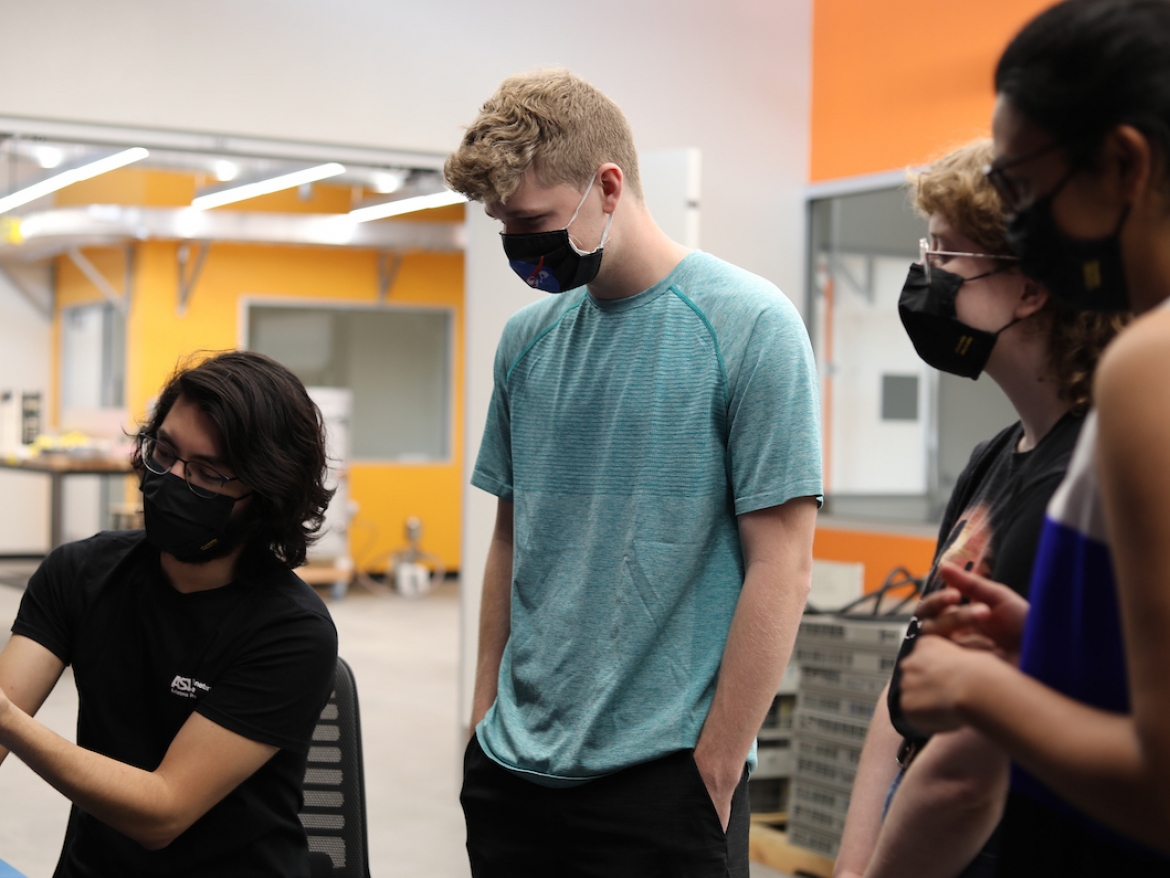 Improving the efficiency and sustainable efforts of the local community are some of the goals of the Cox Connected Environments Collaboratory at ASU, which is why we’re innovating through smart technologies that require communication of different devices through a network. It’s important to note that there are different network types, in terms of performance and capability, that can help this goal become a reality, and different devices that require different networks.
Improving the efficiency and sustainable efforts of the local community are some of the goals of the Cox Connected Environments Collaboratory at ASU, which is why we’re innovating through smart technologies that require communication of different devices through a network. It’s important to note that there are different network types, in terms of performance and capability, that can help this goal become a reality, and different devices that require different networks.
So how do we come up with the mix of wireless networks and devices that will be functional and maximize efficiency?
The best next step is to try them out first…enter the Cox State-of-the-Art Network Testing Laboratory.
This cutting-edge Laboratory will allow Cox to do a proof of concept before installation throughout campus. “The lab is important in that it provides the tools needed to rapidly test new network concepts and prove them in an ASU environment,” said James McCabe, Enterprise Network Architect, Innovation and Digital Transformation for ASU. The Cox State-of-the-Art Network Testing Laboratory will complement an existing wireless and wired network laboratory that ASU is simultaneously working on.
Some of the benefits of this Network Testing Laboratory approach include:
-
Making the process more agile and efficient
-
Protecting ASU’s network security
-
Avoiding the interruption the campus life
-
Offering the perfect space as a controlled environment needed to try different possibilities
Networks 101
Because ASU has robust and infrastructure-varied campuses with specific needs, the State-of-the-Art Network Testing Laboratory will be testing multiple types of networks.
Find out more about the four networks and the benefits of each:
-
Bluetooth 5: the latest version of the Bluetooth wireless communication standard (usually used for wireless headphones and keyboards, mice and game controllers). This technology could potentially be used in contact tracing.
PLUS: Great for tracking devices as it connects device-to-device allowing them to talk to each other.
-
LoRa (Long Range): a wireless technology that offers long range, low-power and secure data transmission (usually used to connect sensors, gateways, machines, devices wirelessly to the cloud). This network is being considered in building various sensor networks across ASU and to regional partners.
PLUS: Excellent for outdoors because it saturates low power wide range.
-
CBRS (Citizens Broadband Radio Service): a high-performance, wide band of radio-frequency spectrum that the Federal Communications Commission has designated for use LTE network/test kiosks. CBRS is a candidate technology for deploying community networks and bridging the digital divide.
PLUS: Useful for last miles, for areas that cannot be reached with cables.
-
Cox Optical Internet: Premium dedicated Internet access service, ideal when high-quality, highly scalable connection to the Internet is needed.
PLUS: It has a dedicated connection to ASU’s Phoenix Metropolitan-Area Cox Fiber Ring, a part of the Cox fiber network infrastructure, which is the fastest fiber connection we can get.
How it's connected
Testing all four networks begins this month at the Laboratory, connecting the network options with the existing Cox Fiber infrastructure on campus. From making contact tracing easier for the ASU Health Check to assisting the ASU campus police to sensor testing around campus to making gaming easier in the dorms, each wireless network type has great potential to offer wireless network improvements.
One of the first concepts to leverage the Laboratory will be “Portable Kiosks.” These kiosks will be able to transmit information that concerns security and transit planning for the campus, helping ASU proactively plan to bring the best experiences for the community.
The new Network Testing Laboratory brings many opportunities for growth to an already smart campus. “The lab will have a direct impact on network performance and capabilities to students, faculty and staff, in that what we learn through testing in the lab will be deployed across ASU networks,” said McCabe.